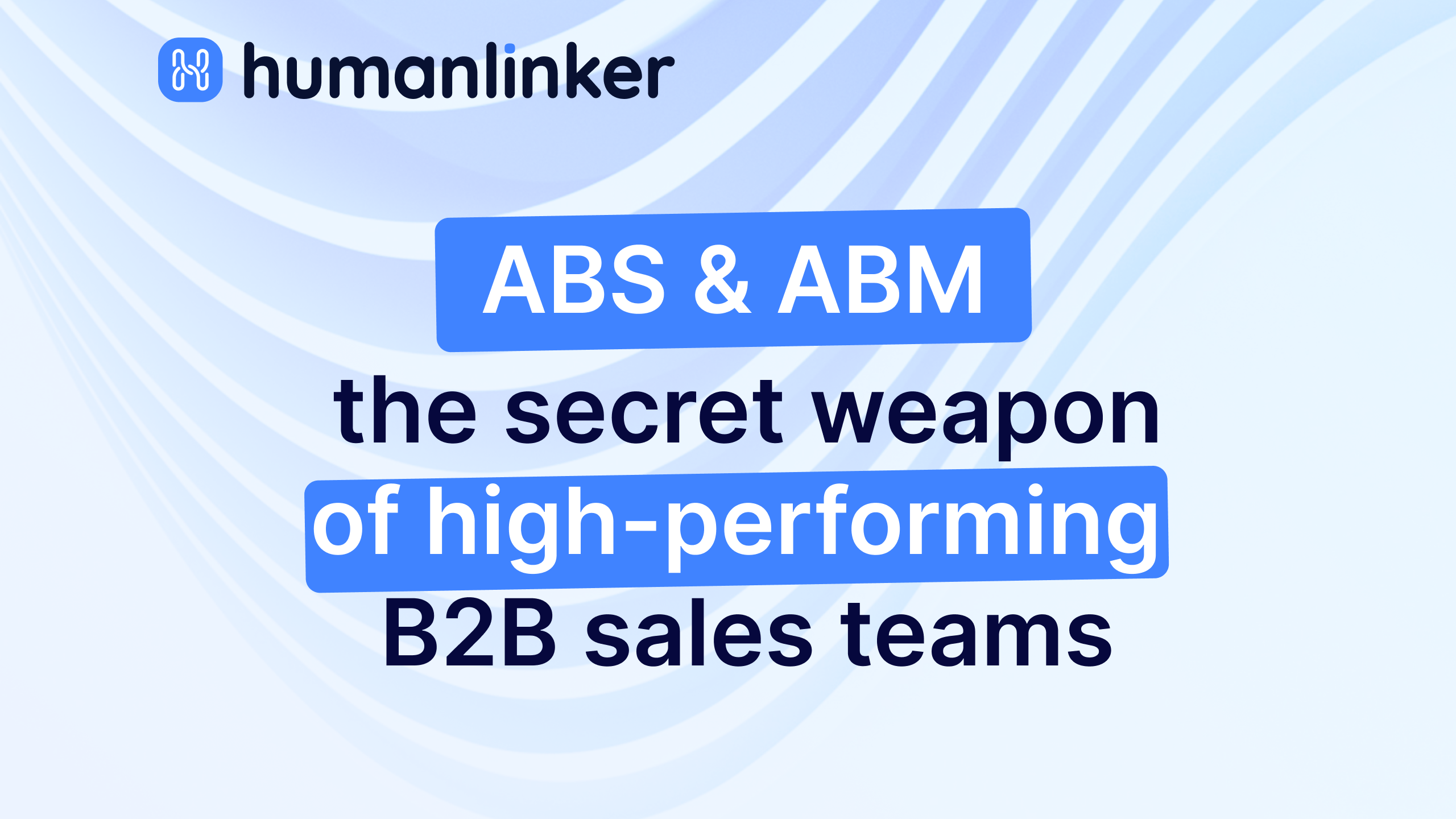Static vs Dynamic Prospecting List: A comprehensive comparison

In today's digital era, every person on the globe generates 1.7 MB of data every single second. To put it in perspective, "This is akin to storing an 850-page book every passing moment." Such a staggering volume of data, which individuals effortlessly shed while surfing online, remains a largely untapped goldmine for B2B companies.
Armed with the right data, companies can not only forge deeper connections with their audience but also sculpt a customer-centric sales pipeline and drastically refine their operational strategies. But the cornerstone of such transformations? Access to high-quality data, which can either be static or dynamic.
While static data has been a long-standing pillar in the B2B arena, dynamic data is a relatively nascent contender. To gauge the merits and limitations of each and discern which is better poised for B2B endeavors, it's crucial to first delineate the constructs of dynamic and static data.
🗣️ In a world inundated with information, understanding the nuances of data types can be the difference between strategic success and missed opportunities.
What Is Static Data?
A static prospecting list is akin to a ledger of potential clientele that requires intermittent revisions or targeted approaches. It is essentially a roster earmarked for sales or marketing undertakings, characterized by its stability and infrequent alterations. Such lists are the bedrock of sustained outreach campaigns.
Static prospecting lists serve as invaluable assets for enterprises that wish to channel their endeavors towards a distinct cohort of prospects, without the continual need for list augmentation or modification. However, it's imperative to regularly audit and rejuvenate these lists to ensure their continued relevance and accuracy.
🗣️ In the dynamic world of business, even the 'static' needs periodic checks and balances.
Crafting a static prospecting list can either be a manual endeavor, painstakingly collating a series of contacts, or a more automated process using tools like a customer relationship management (CRM) platform or other data scraping utilities. Such lists can encapsulate myriad data points, including contact specifics, industry niche, organizational scale, and other pertinent details, all aimed at enabling sales and marketing brigades to fine-tune their engagement strategies.
In the current digital renaissance, "Old tools are getting new life." Traditional static repositories, like Excel sheets and Google Sheets, are undergoing metamorphoses into dynamic data hubs, courtesy of extensions or APIs that breathe dynamism into erstwhile static data.
Pros of using a static prospecting list

Using a static prospecting list for sales and marketing efforts has several advantages:
- Easy to create and maintain: A static list is easy to develop and maintain because it does not constantly change. This means you can make a list once and use it as a reference for your prospecting efforts.
If you need to have more intricate data, there may be some complexity in creating this kind of list. But in most cases, simply using a LinkedIn search, a Phantom or Captain Data scraping tool saves the day.
- Allows for targeted outreach: This ensures you only contact the most qualified and relevant prospects rather than wasting time and resources on opportunities that could better fit your products or services.
In addition, it’s important to be careful to exclude prospects and leads that have already been contacted or are already in your database.
- More efficient: Using a static list can be more efficient, as you don't have to update and maintain the list constantly. This can save you time and allow you to concentrate on other important tasks. In addition it can be shared in 1 click, for example, with Airtable or Google Sheets. Static data is perfect for challenging and sharing lists. On the other hand, if you have the data now, be careful to share it immediately, as it may quickly become obsolete.
What Is Dynamic Data?
In the realm of data analysis, dynamic data stands out as a continually evolving entity. This type of data is in a perpetual state of flux, continually adapting based on real-time processes or activities. Examples encompass data streams emanating from CRM systems, fluctuations in financial markets, the ebb and flow of job hiring, and the ceaseless cascade of social media feeds.
🗣️ "In the digital age, dynamic data is the heartbeat of real-time business insights."
Contrastingly, dynamic data can also be envisioned as data that is ceaselessly modified or updated by end-users. This could be data residing within a database, or even a spreadsheet that finds its home in a state-of-the-art data warehouse.
Dynamic data stands in stark contrast to static data. While the latter is emblematic of data that remains steadfast and unaltered, dynamic data presents a challenge, given its mutable nature. Though its constant evolution might make it a tad challenging to handle and dissect, its intrinsic value is unparalleled. It serves as a mirror, reflecting the ever-changing landscape of present scenarios and activities.
🗣️ "While static data is like a snapshot in time, dynamic data is the ever-playing movie of current events."
Various storage mechanisms and structures can house dynamic data, ranging from intricate databases to simplistic flat files, and even cutting-edge data platforms. Its quintessence is captured in real-time applications. Whether it's data analytics, the intricate algorithms of machine learning, or decision-making systems, dynamic data is the linchpin, ensuring access to the freshest information.
One of the sterling attributes of dynamic data is its adaptability. The moment a shift materializes in the environment, the data set metamorphoses in tandem. This dynamism eradicates the pitfalls of relying on stale data.
Pros of using a dynamic prospecting list

Utilizing a dynamic prospecting list in sales and marketing strategies offers a myriad of advantages that can significantly enhance outreach and engagement efforts:
🗣️ "In the world of sales and marketing, being dynamic is not an option; it's a necessity."
- More Up-to-Date Information: Dynamic lists are perpetually refreshed, ensuring that the data you have is not only relevant but also current. For those navigating rapidly changing markets or where the target audience is continually evolving, this real-time updating is invaluable.
- Flexibility & Adaptability in Outreach: Dynamic lists are synonymous with flexibility. As market dynamics shift or business priorities evolve, so can your outreach strategy. Whether it's a change in targeted sectors, employee count, or specific job titles, real-time adjustments are just a few clicks away.
🗣️ "In a dynamic business landscape, adaptability is the key to staying ahead."
- Enhanced Lead Generation: The fluid nature of dynamic lists means that as new leads are identified, they can be seamlessly incorporated. This continuous addition ensures a robust lead pool, keeping the sales pipeline perpetually primed.
- Precision in Segmentation: Tailoring messages to specific segments can drastically elevate engagement rates. With dynamic lists, segmentation based on various criteria - from industry type and geographical location to company size - becomes straightforward. Such granularity ensures outreach efforts are both targeted and personalized, dovetailing seamlessly with broader marketing campaigns.
🗣️ "The more tailored the message, the deeper the engagement."
- Real-time Reporting & Dashboards: For those seeking to provide stakeholders with a snapshot of efforts and results, dynamic lists are a boon. Since the data is instantaneously updated, any reports or dashboards derived from it are always in sync with the current state of affairs.
When is it more appropriate to use a static prospecting list vs a dynamic prospect list?
Static Lists: Quick and Efficient
- Quick Workflow: Static lists enable users to swiftly engage with prospecting files, streamlining processes.
- Cost-Effective: Monitoring data on static lists usually comes at a relatively low cost.
- Tool Diversity: A plethora of tools are at your disposal to create and manage these prospecting files.
- Ideal for Smaller Teams: While they're perfect for individuals or small teams, scaling up and sharing with larger teams might pose challenges.
- Process Simplification: Everything is consolidated. One file can house multiple tables and data sets, making navigation and analysis straightforward.
Dynamic Systems: Real-time and Comprehensive
- Accuracy in Prospecting: Continuous data refreshment means reduced chances of miscommunication or redundant follow-ups.
- Holistic Interaction Tracking: Every interaction with prospects and customers is logged, providing a rich communication history.
- Advanced Workflows: Strategic filters facilitate the creation of high-level workflows, ensuring tailored communications.
- Deep Customer Insights: With more data captured and analyzed, understanding customer behaviors and preferences becomes clearer.
- Expanding Target Audience: Dynamic systems can identify and integrate potential prospects outside the initial target circle.
- Automated Prospecting: Set criteria and let the system identify and communicate with the right prospects automatically.
- Inter-departmental Alignment: Real-time data means marketing, sales, and product teams are always on the same page.
- Data-Driven Content Push: Segment-specific content can be marketed based on real-time insights.
- User-Based Insights: Dynamic systems can offer feedback and insights based on individual user activity.
- Always Updated: Properties are constantly refreshed, saving invaluable time for sales representatives.

AI in B2B sales: the top trends to improve conversion and customer retention

When ABS Meets ABM: The Power Duo to Transform B2B Sales




Find out in 30 minutes how Humanlinker can help you achieve your goals.



